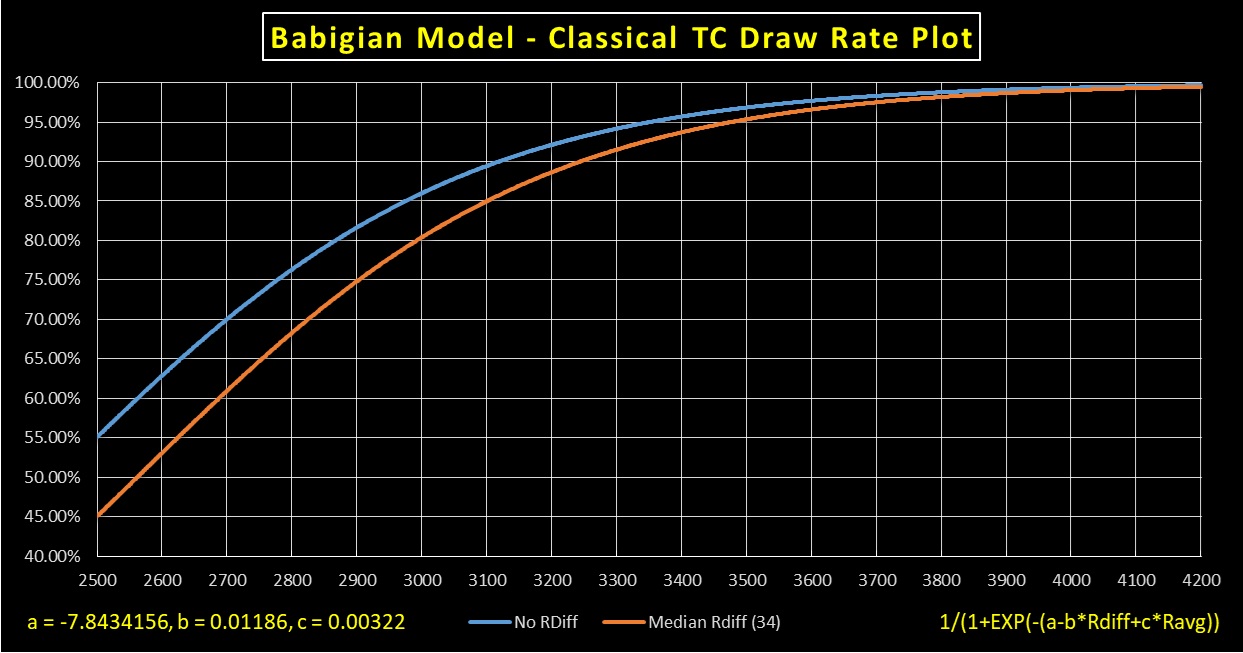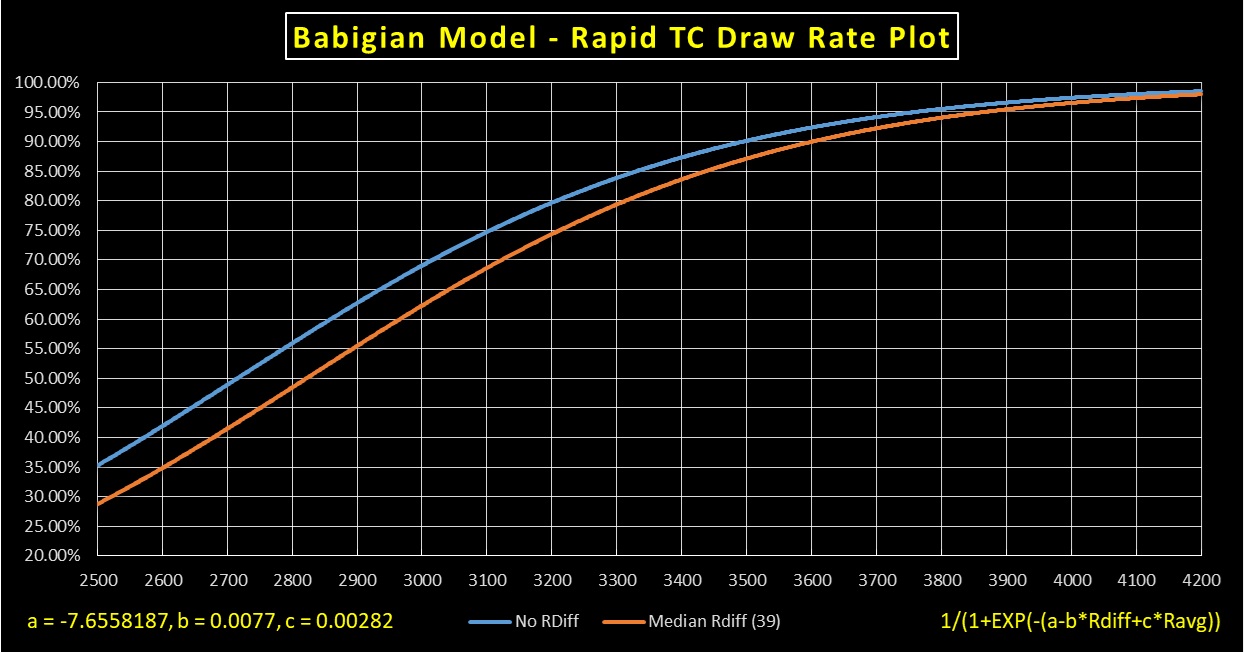Let me start by again saying thank you to Ajedrecista for the links he provided. Although I remember reading these discussions back in the day, I had completely forgot about them and the models they discussed. Although I looked at the draw rate formula for Davidson and Glen-Davidson, I could not get them to work properly. Perhaps I'm doing something wrong.
However, I have spent some time writing a program to find the coefficients for the Babigian Model (I figured I should name it

). I initially thought finding good coefficients would not be time consuming; however, I'll add that to the long list of things I was wrong about. After discovering the difficulty of finding the best/good values for three interacting coefficients, I rewrote my coefficient finder to be multi-threaded. That said, this is what I found:
Code: Select all
a=-7.8434156
b=0.01186
c=0.00322
DrawRate = 1 / (1+exp(-(a-b*Rdiff+c*Ravg))
I used the following data to model these values.
software.farseer.org/Software/EliteChes ... 03-2023.7z The zip contains 3 files Classical, Rapid, and Blitz. These values were modeled on the Classical pgn. To model the coefficients, I first produced some statistics about the dataset. I found the following for Classical-2003-2024-rating2630andUp-NoFRC.pgn:
Code: Select all
Dataset Average Draw Rate: 61.679%
Median RDiff: 34
Median Elo: 2700
White Win: 24.548%
Black Win: 13.773%
I began my coefficient search using two "Penalties." If the formula output for the median rating and median RDiff strayed too far from 61.679% a penalty was added to prevent this. (i.e. Median Elo is 2700, so the formula was fed Ravg=2700 and RDiff=34. 34=Median Rdiff). The second penalty was if two 4200 players were fed into the formula and the draw rate drifted too far from 99.85%.
This methodology produced a very reasonable set of coefficients and I've graphed the result using two players of equal strength from 2500 to 4200 and two players centered +-17 Elo around the x axis value (median Rdiff of the dataset).

(
software.farseer.org/Software/ClassicalPlot.jpg)
I look forward to feedback or comments on how well you believe this construct functions for elite classical chess.
A note about Davidson (1 / (1 + EXP(-da * (Ravg + db * Rdiff)))) and GlenDavidson (EXP(gda*Ravg)/(1+EXP(gda*Ravg)+EXP(gdb*Rdiff))). I tried a few times to find working coefficients for these models, but both seem to produce irrational draw rate graphs. In addition, no matter how much I tried to model the dataset, when you insert RDiff's approaching zero, the draw rate skyrockets. I therefore gave up on these two models. Perhaps someone has more information on these models that I didn't find.
Finally, I will find coefficients tuned for the Rapid and Blitz pgn files and post those at a later time. It takes a lot of compute to analyze 10s of thousands of games with billions of combinations of coefficients.
Any feedback is most welcome,
Mike


